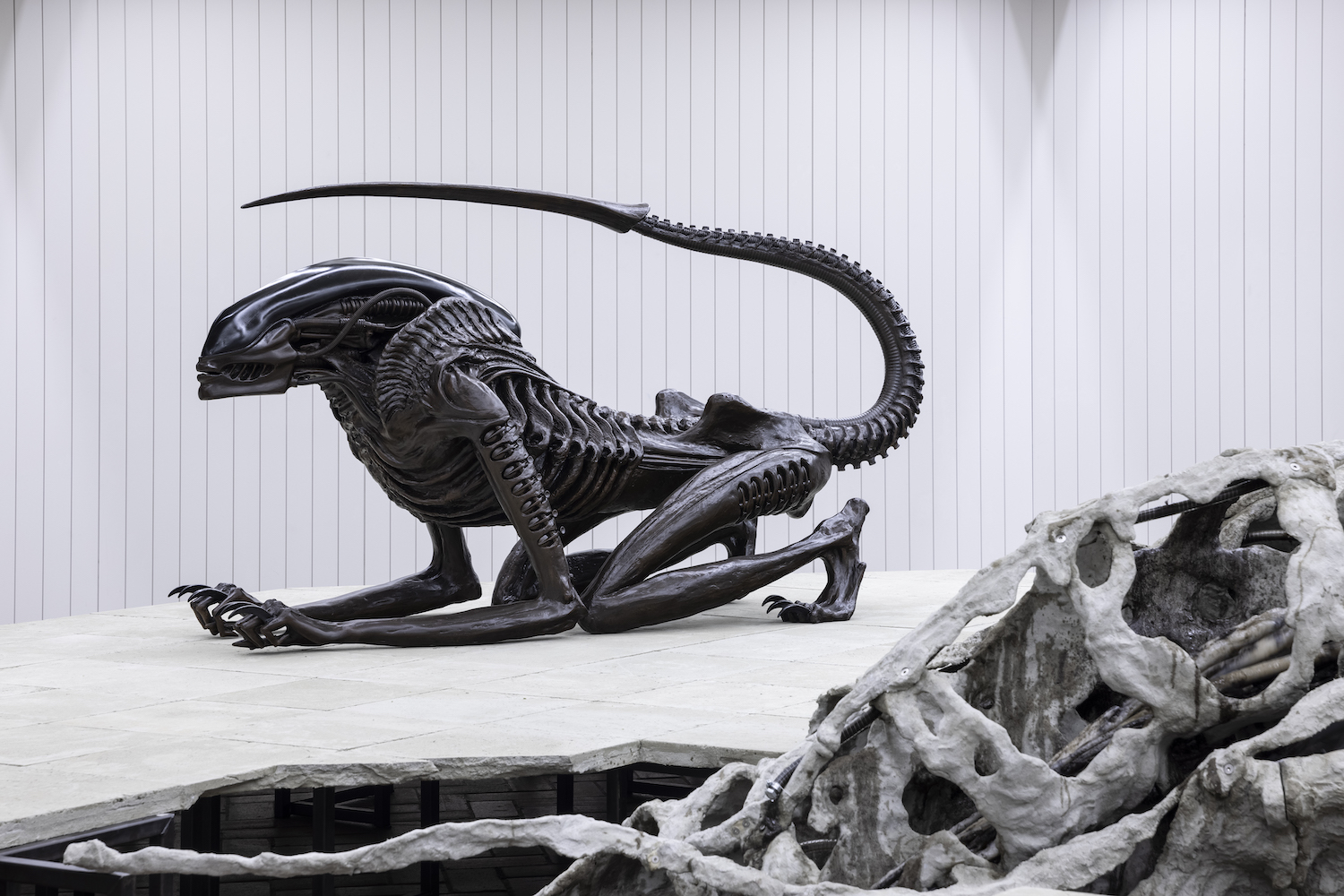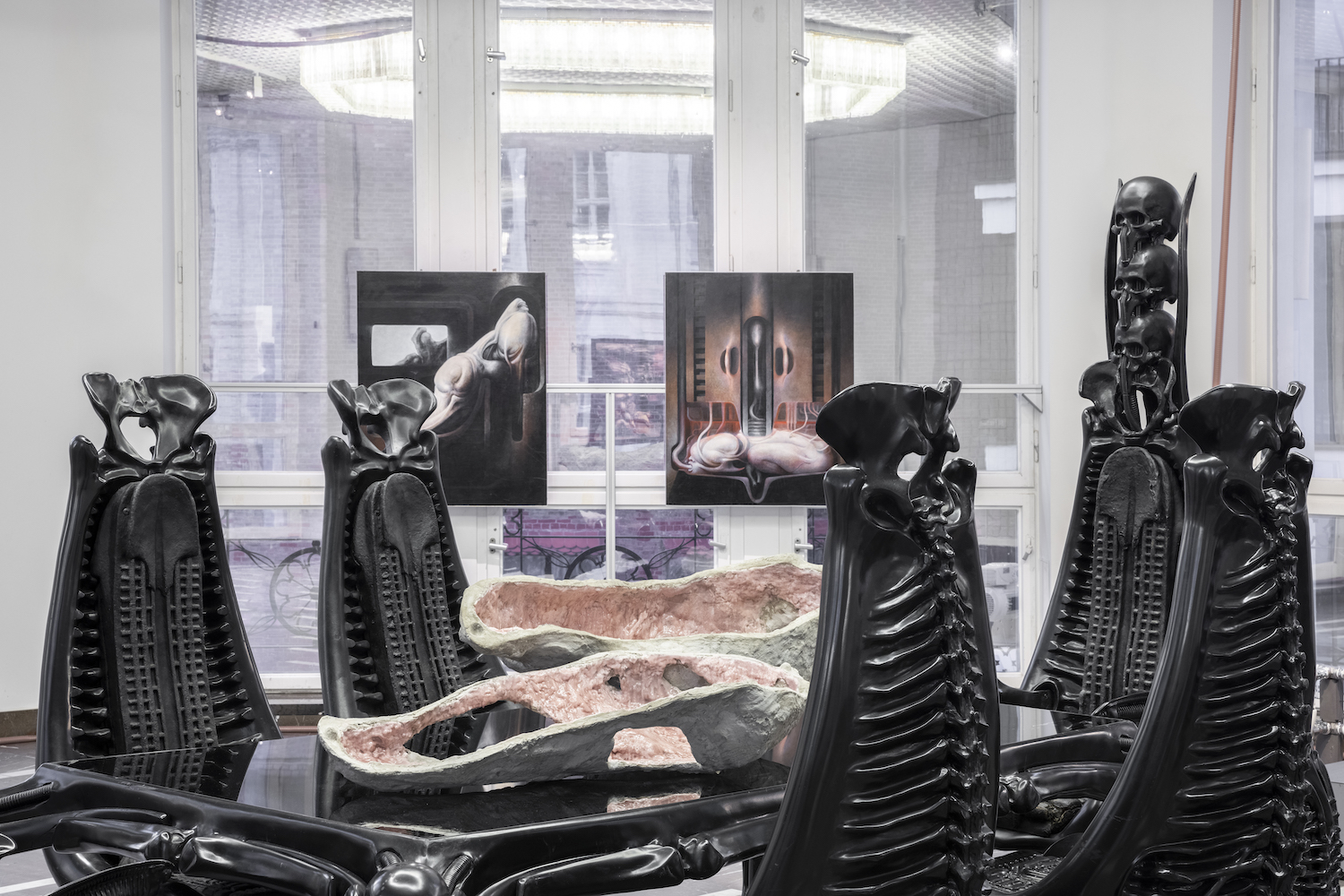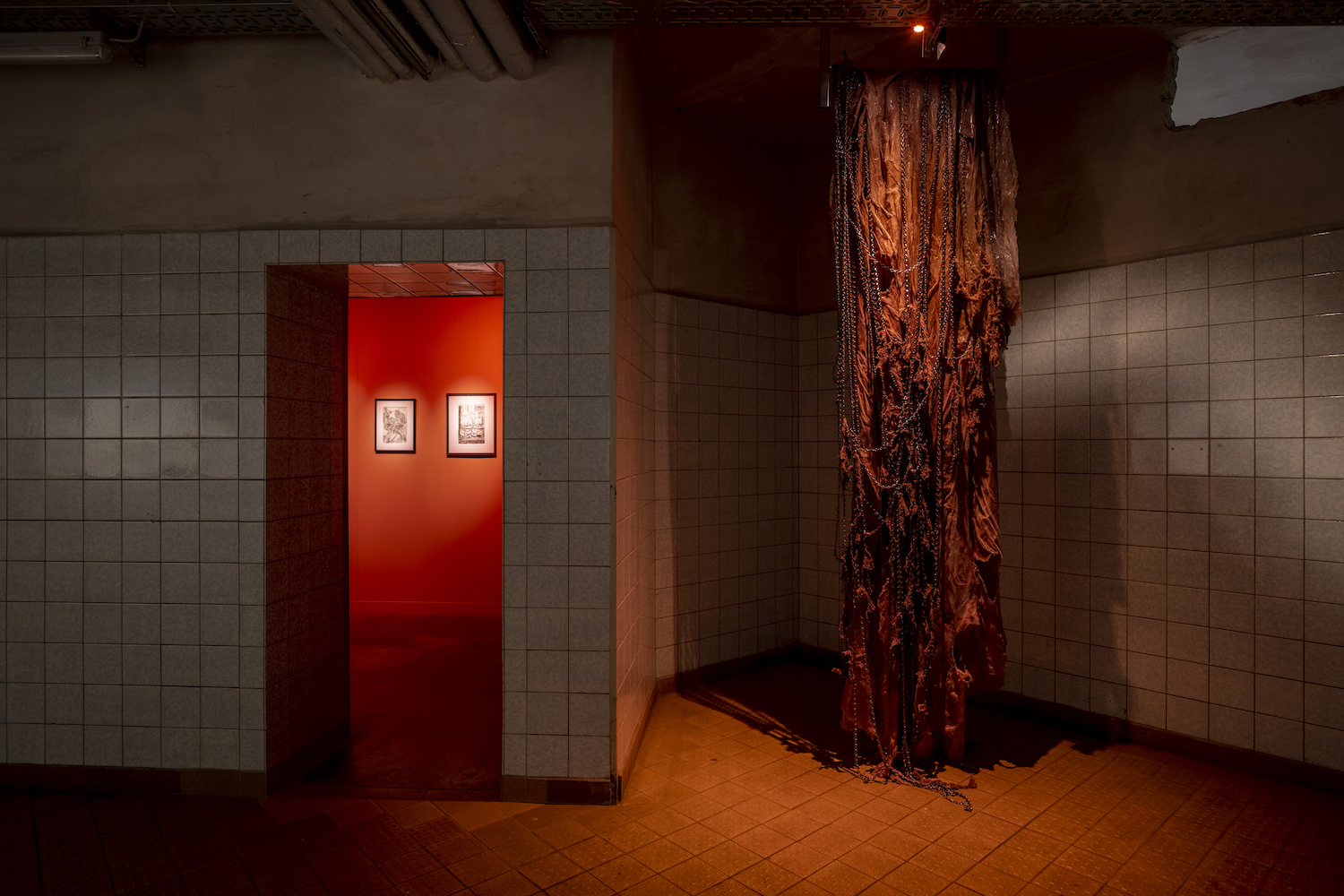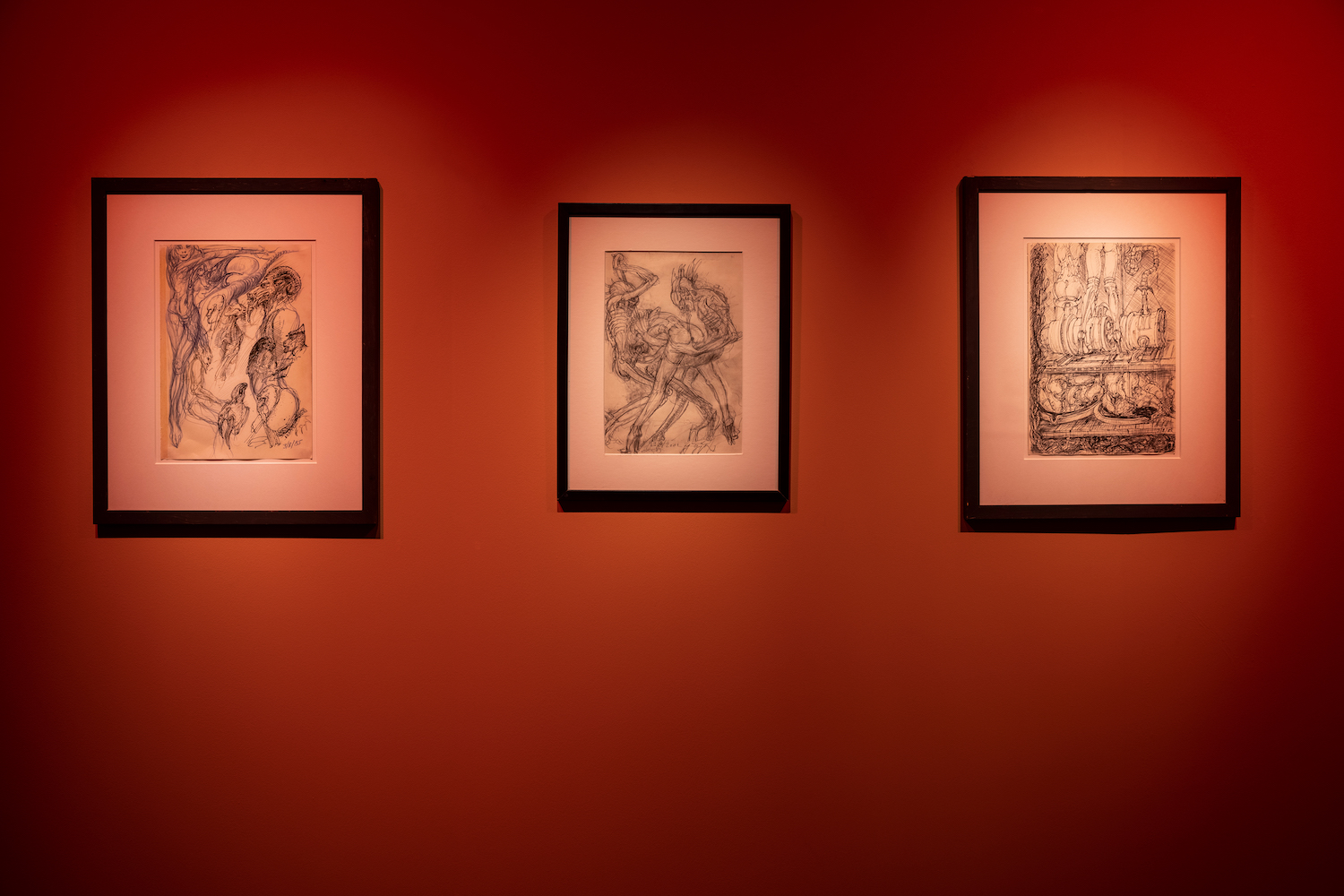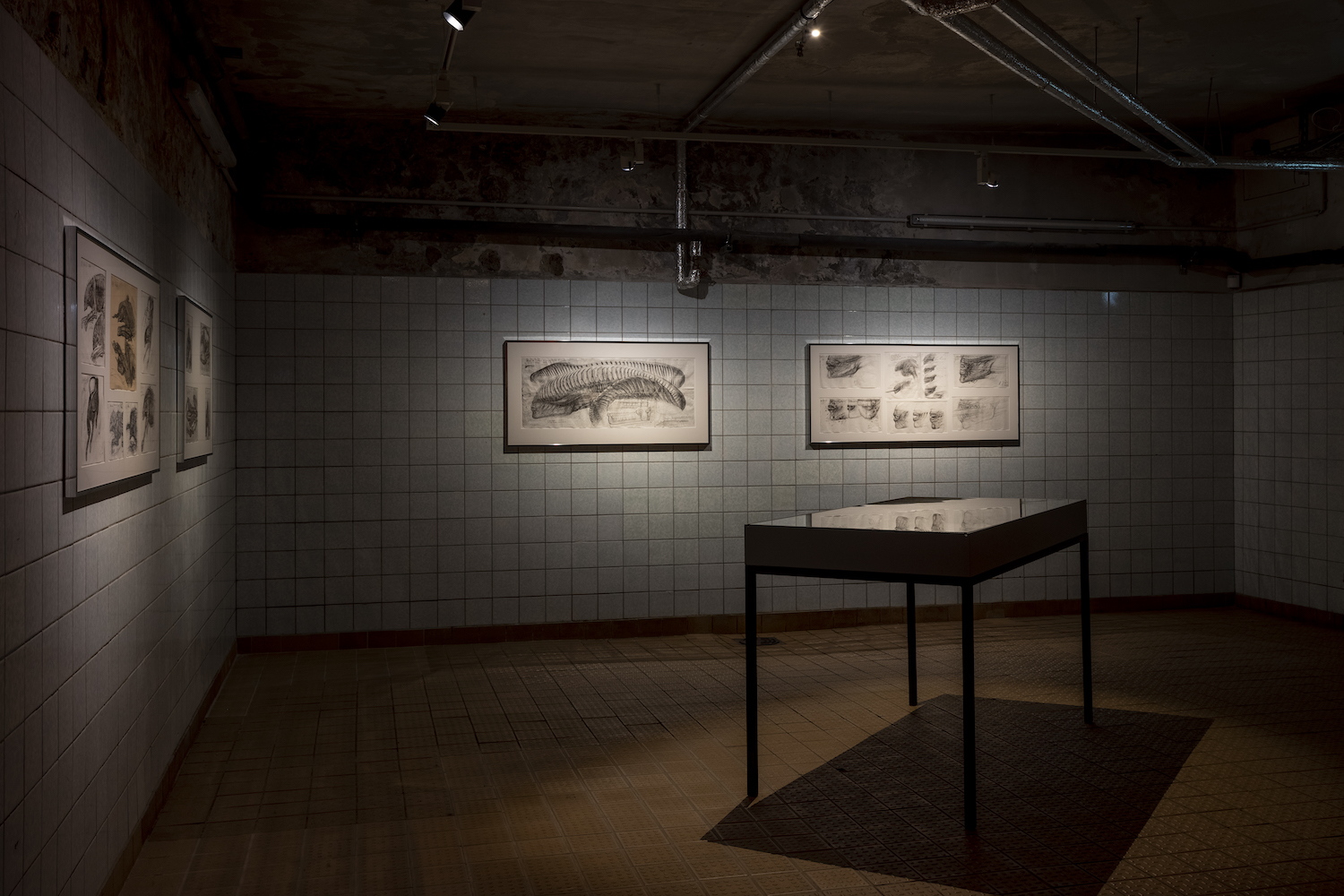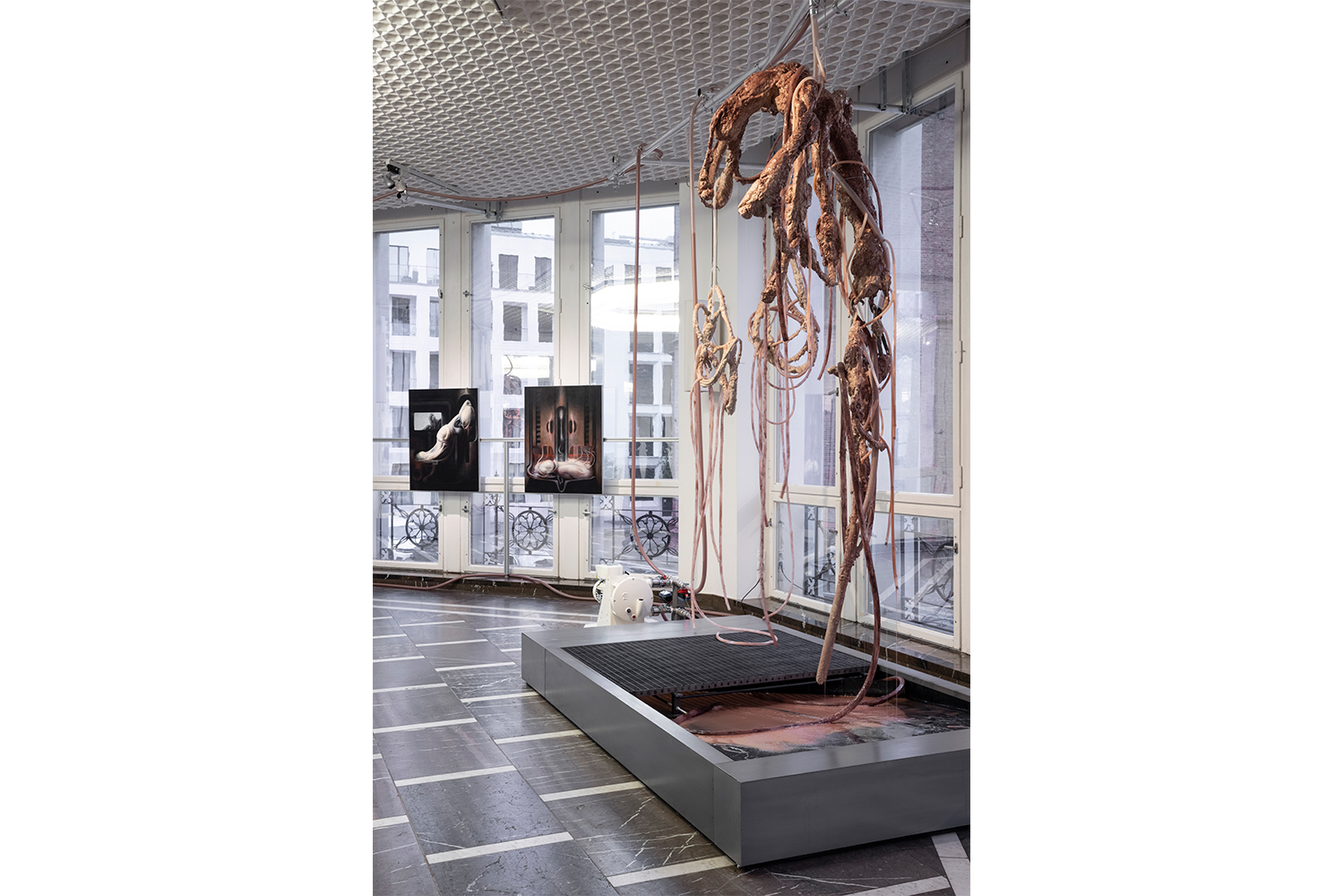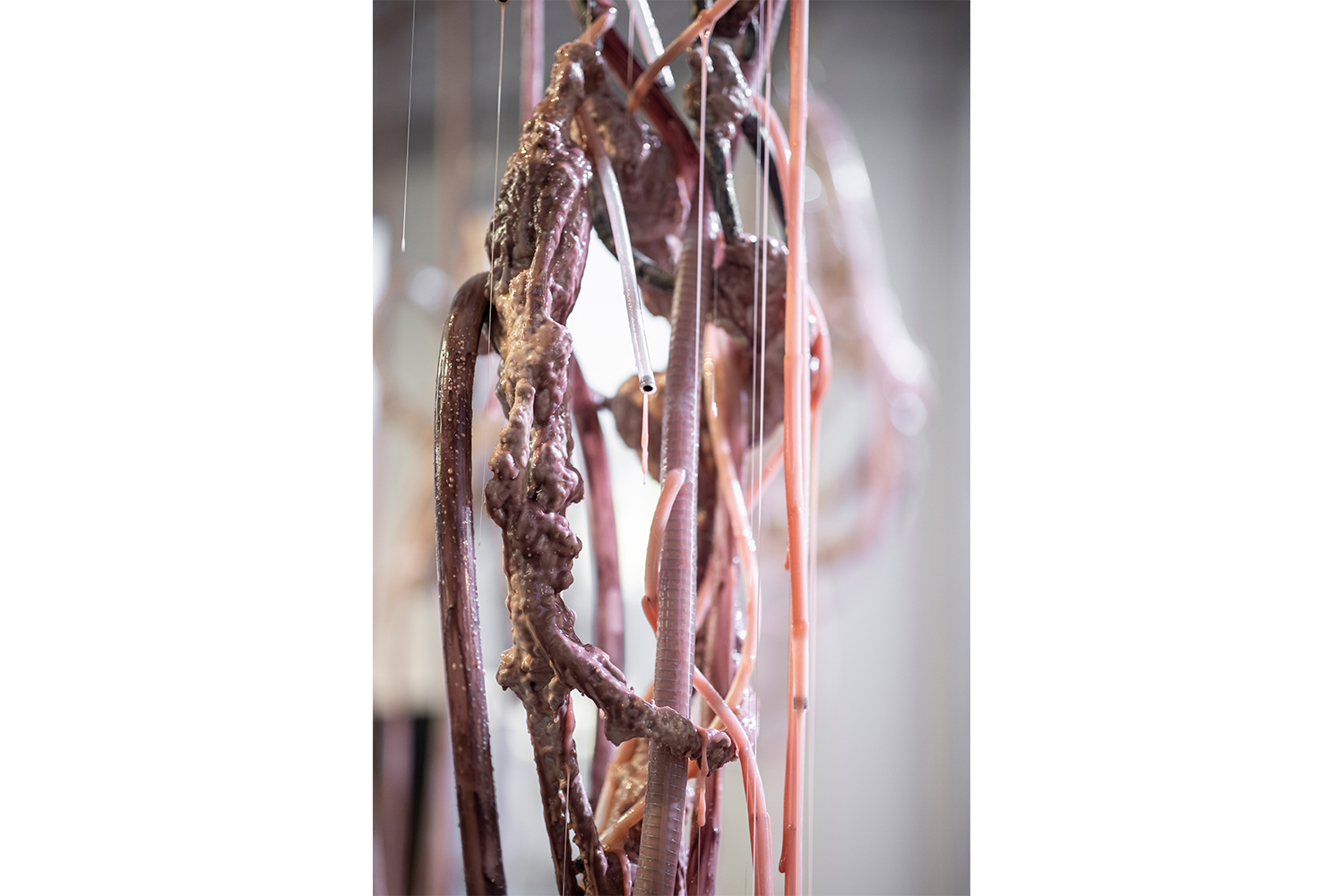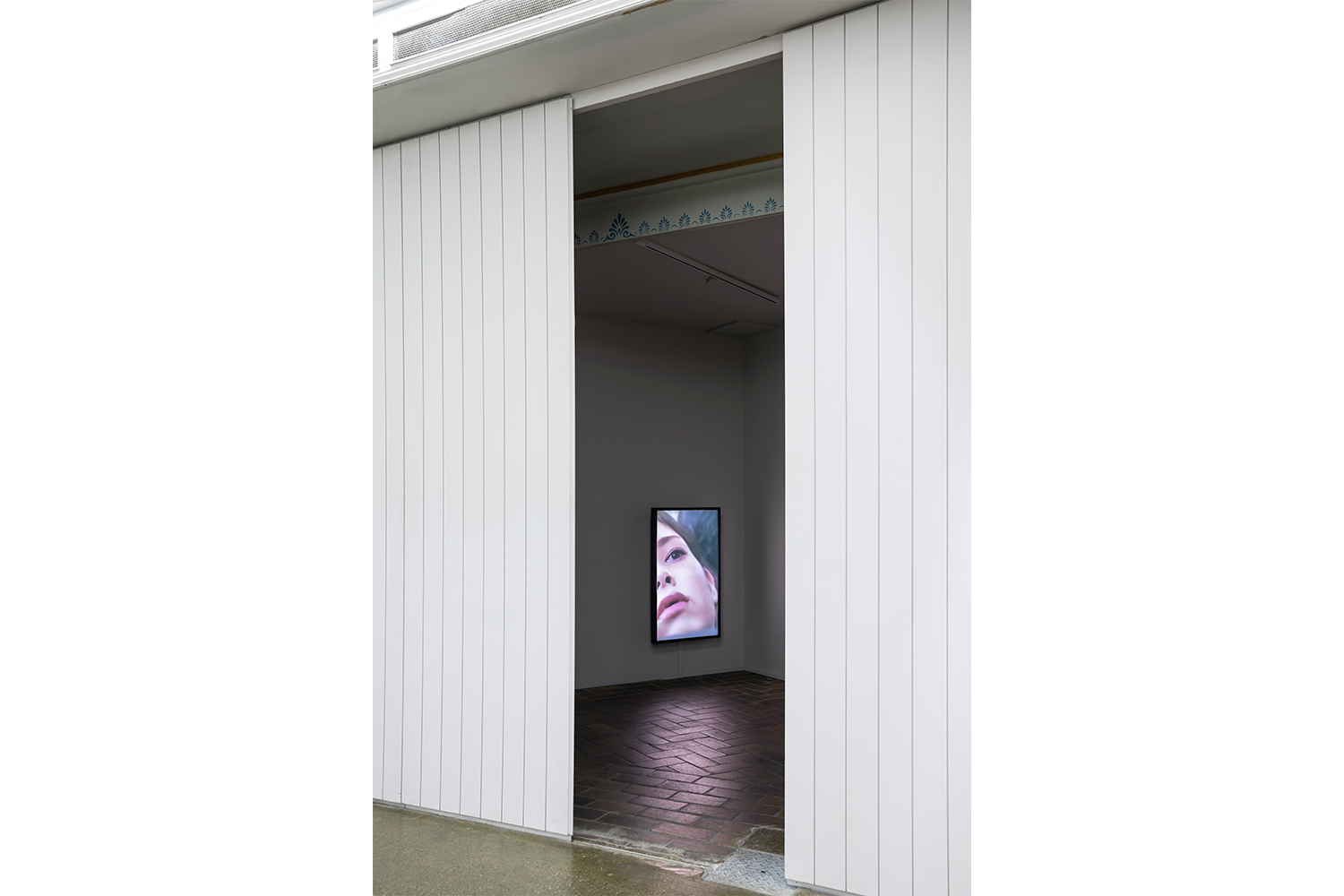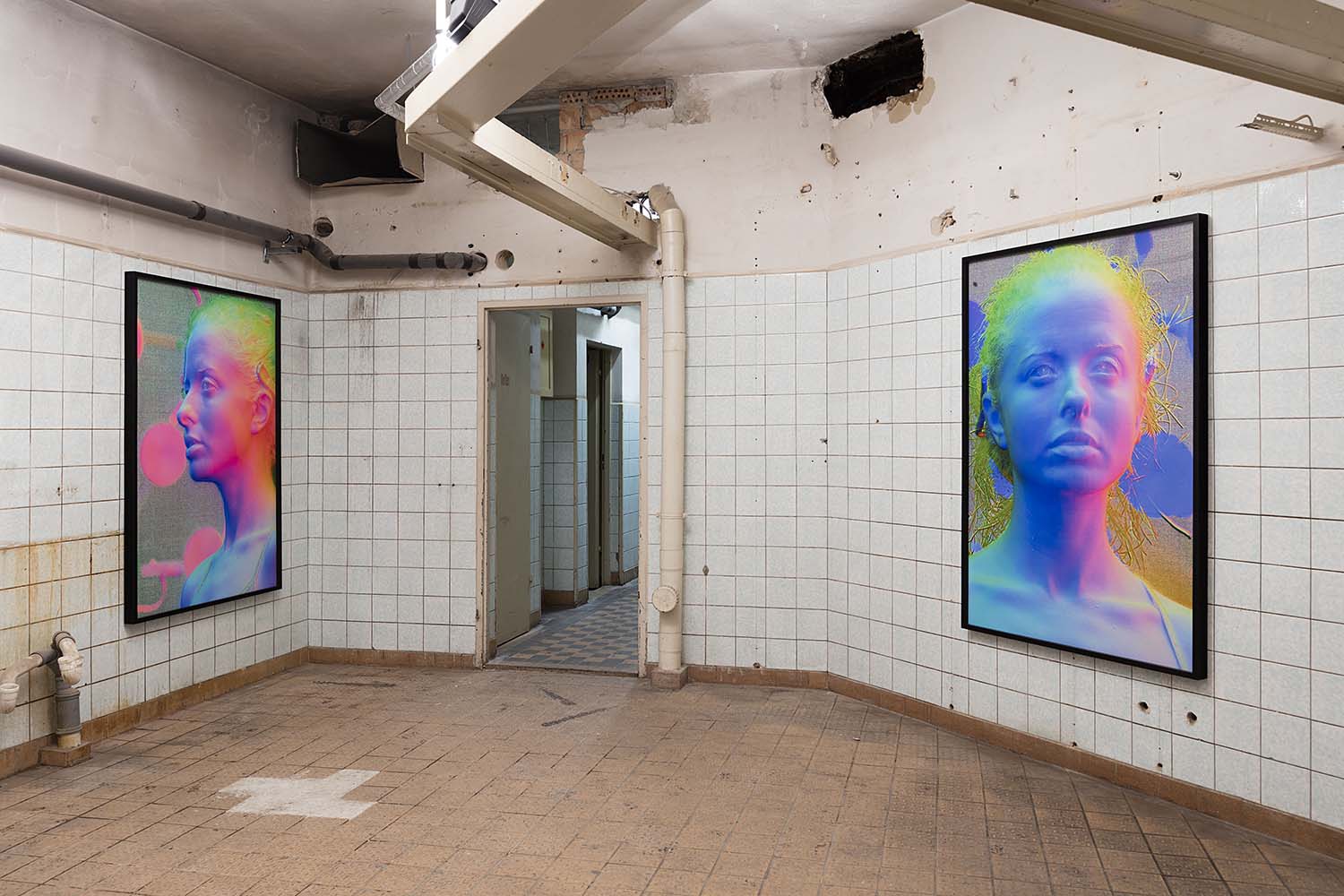Currently on view at Schinkel Pavillon, Berlin, the oft-termed “unlikely” dual presentation of works by the late Swiss surrealist artist H. R. Giger (1940–2014) and Korean sculptor Mire Lee (1988–) is consolidated by each artists’ singular understanding of the psychosexuality of the other — that is, the unmitigating tension between the otherworldly and the carnal — imaging the immortal as only mortals can fathom. Uniting these two positions, curator Agnes Gryczkowska has organized perhaps the most talked about show in Berlin of recent months, eschewing the historicism one might expect of a presentation of Giger’s iconic drawings and sculptures by embracing Lee as a counter to the former, allowing a parallel viewing of these works to extract further themes of anthropomorphic body horror as they pertain to a specific science-fiction canon. It is only natural that with such excitement and attention, certain questions should arise: Does the fact of Giger’s profuse contribution to the collective imagination of the archetypical alien eclipse Lee’s autonomy in this specific presentation?
Born shortly after the outbreak of the Second World War in Chur, Switzerland, Giger claimed his earliest memory to be that of the trauma of his own birth via forceps.¹ “His difficult birth was always in him,” claimed his widow, Carmen, in a 2019 interview in which she also recalled conversations between her husband and their friend, a psychiatrist who, much to Giger’s interest, would liken the subjective experience of birth trauma to an encounter with one’s psyche.² An avid reader of Freud and Jung, particularly the latter’s theories on abjection and the deep, collective unconscious, Giger’s work is conspicuous in its representation of these ideas through a fastidious aesthetic of erotic violence.
The exhibition begins upstairs with the drawings Birthmachine (1965–6; 1967) and the sculpture Suitcase Baby (1967) which, according to the detailed press release-cum-floor-plan, make politics of childbirth as the artist reflected upon the anxieties caused by the ensuing nuclear arms race as well as the affect of his own aforementioned trauma. Moving into the central octagonal atrium one encounters Harkonnen Environment (1981), a gothic, skeletal dining table set created by Giger for the villain of Alejandro Jodorowsky’s famously unrealized adaptation of Frank Herbert’s epic science fiction novel Dune. An interpretation of this work may be helped by an understanding of the themes of empire and violence pivotal to the source novel, but it is Gryczkowska’s implication of the table as it was intended — as a prop — which provides a crucial line of inquiry into Lee’s part in this presentation. Placed atop Harkonnen Environment is Endless House: Large Egg (2021), a new work by Lee in which a calcified, bone-like exterior has split open to reveal soft, fleshy insides. Moved in part by her interest in vorarephilia or vore — the erotic desire to consume or be consumed by another person or creature — Lee’s work introduces notions of prenatality, consumption, and salaciousness that recur across the exhibition.
Toward the back of the “womb-like” room — Lee’s Carriers: Offspring (2021) — a corporeal mess of transparent tubing through which courses a milky, viscous puce-colored slime, occasionally expels this liquid like ejaculate, only to re-consume it. Downstairs, Endless House (2021), another of Lee’s animatronic sculptures of concrete, silicon oil, silicon foam, and other mixed media, communes with Giger’s sublimely dimensioned Necronom (Alien III) (1990), arguably the flagship sculpture of this exhibition: the titular Alien (or Xenomorph) from director Ridley Scott’s science-fiction horror franchise which subdues its prey in a ritual of interspecies rape. In spite of its menacing posture — the Xenomorph is crouched low, its back arched, tail erect and poised — there is an unmistakable fecundity to the being, a disturbing notion to reconcile as one continues through the labyrinthine downstairs rooms in which more of Giger’s increasingly sadistic works on paper can be viewed alongside The Liars (2021), another new sculpture by Lee which hangs like a slaughtered animal in an abattoir, and perhaps Lee’s most affecting work in this exhibition, Untitled (2021), in which a “pitiful” mechanical tangle of silicon and cables writhes in a pile on the floor as if mortally wounded and condemned to suffer. While an entirely autonomous viewing of Lee’s sculptures suffers for their proximity to Giger’s rubric for a vorarephilic alien aesthetic, the aura of his work confers a surplus of meaning to Lee’s own creations.

